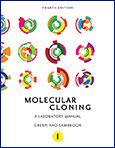
Photo from archive.org
Ras controls a multitude of cellular signaling processes, including cell proliferation, differentiation, and apoptosis. Deregulation of Ras cycling often promotes tumorigenesis and various other developmental disorders, termed RASopothies. Although the… Click to show full abstract
Ras controls a multitude of cellular signaling processes, including cell proliferation, differentiation, and apoptosis. Deregulation of Ras cycling often promotes tumorigenesis and various other developmental disorders, termed RASopothies. Although the structure of Ras has been known for many decades, it is still one of the most highly sought-after drug targets today, and is often referred to as "undruggable." At the center of this paradoxical protein is a lack of understanding of fundamental differences in the G domains between the highly similar Ras isoforms and common oncogenic mutations, despite the immense wealth of knowledge accumulated about this protein to date. A shift in the field during the past few years toward a high-resolution understanding of the structure confirms the hypothesis that each isoform and oncogenic mutation must be considered individually, and that not all Ras mutations are created equal. For the first time in Ras history, we have the ability to directly compare the structures of each wild-type isoform to construct a "base-line" understanding, which can then be used as a springboard for analyzing the effects of oncogenic mutations on the structure-function relationship in Ras. This is a fundamental and large step toward the goal of developing personalized therapies for patients with Ras-driven cancers and diseases.
Journal Title: Cold Spring Harbor perspectives in medicine
Year Published: 2018
Link to full text (if available)
Share on Social Media: Sign Up to like & get
recommendations!